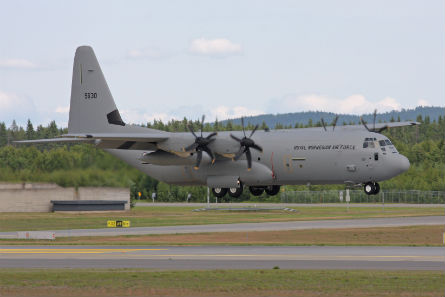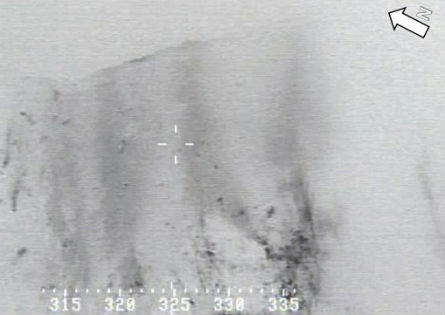Norwegian and Swedish authorities have launched investigations into the cause of a 15 March crash which killed all five crew members on board one of the Royal Norwegian Air Force's Lockheed Martin C-130J tactical transports.
A major search and rescue effort was launched shortly after the aircraft disappeared from radar while flying between Evenes air base in northern Norway and Kiruna, Sweden. Bad weather meant wreckage was not spotted by the crew of a Royal Norwegian Air Force Lockheed P-3C Orion surveillance aircraft until early on 17 March.
 |
|---|
© Flyphanuk gallery on flightglobal.com/AirSpace |
Identified as "SIW", the C-130J departed Evenes at 13:30 local time en route for Kiruna, where it was to collect soldiers before flying back to the Norwegian base in support of a major NATO exercise named "Cold Response".
The Hercules crew left a holding position at about 14:45 and started their approach to Kiruna before disappearing from radar at 14:57, while near Sweden's Kebnekaise mountain. The air traffic control tower at Kiruna reported the C-130J missing approximately 30min later.
"We kept our hopes of finding the plane and its crew in good shape, but as time passed we feared it had crashed in the mountains," Norwegian Joint Forces Commander Vice Adm Haakon Bruun-Hansen said during a memorial service at Evenes on 18 March.
A Norwegian P-3C crew spotted evidence of the crash on the northwest side of Kebnekaise, with the impact site at an altitude of about 4,920ft (1,500m).
 |
|---|
|
Image and virtual rendering © Norwegian armed forces |
"Search and rescue teams from both Sweden and Norway searched the area under extreme conditions in the hope of finding any survivors. During the day it became evident that no crew members had survived," Bruun-Hansen says.
Wreckage is scattered over a large area, including in a fresh avalanche zone beneath the impact point.
"The accident is still a mystery to us," Bruun-Hansen says. "The C-130J Hercules is the safest aircraft serving in the Royal Norwegian Air Force. The crew was one of the air force's most experienced, with long service and many flying hours in this type of plane."
Because of the location of the accident, a Swedish-led Accident Investigation Commission will work to identify the cause of the crash.
"SIW" was the youngest of four C-130J-30s delivered to the Royal Norwegian Air Force, with the aircraft having been delivered in July 2010 with the tail number 5630.
Assigned to the service's 335 Sqn at Gardermoen, the aircraft's crew has been named as pilots Lt Col Truls Audun Ørpen and Capt Ståle Garberg, plus loadmasters Capt Siw Robertsen and Capt Bjørn Yngvar Haug. Also onboard was Capt Steinar Utne, a pilot/safety officer drawn from the air force's 137 Wing at Rygge air base.
The incident is only the second crash involving Lockheed's new-generation C-130J, more than 250 of which have been delivered. The other involved an Italian air force KC-130J, which crashed killing five people in November 2009 after conducting a touch and go landing at Pisa airport.
The UK also destroyed one of its Royal Air Force C-130Js on the ground after it sustained significant damage when an improvised explosive device was detonated as it landed on a remote airstrip in western Iraq in early 2007.
Source: Flight International




















